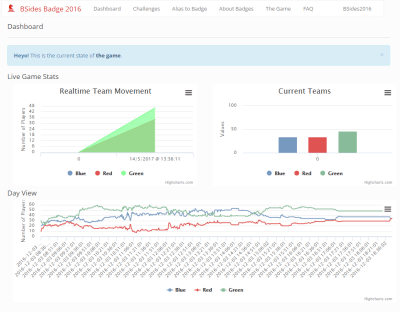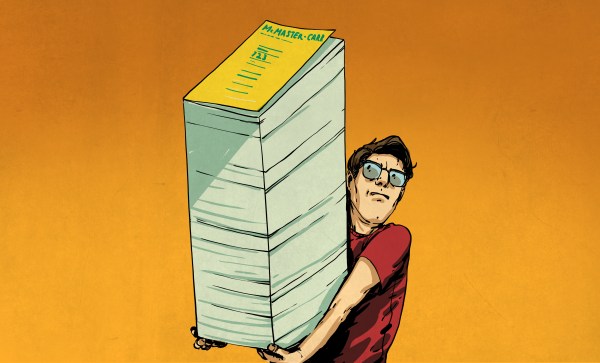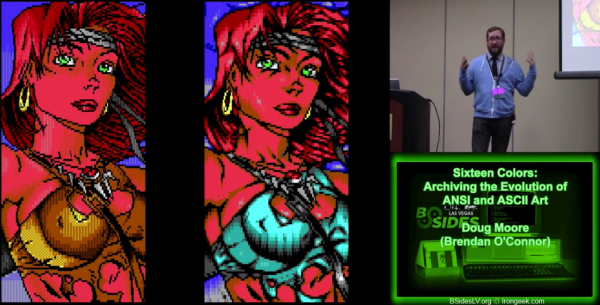Off-the-shelf stock parts are the blocks from which we build mechanical projects. And while plenty of parts have dedicated uses, I enjoy reusing them in ways that challenge what they were originally meant for while respecting the constraints of their construction. Building off of my piece from last time, I’d like to add to your mechanical hacking palette with four more ways we can re-use some familiar off-the-shelf parts. Continue reading “The BSides: More Curious Uses Of Off-the-shelf Parts”
bsides3 Articles
Zombie Badges Take Over Security Con
We can’t get enough of hacker-con badges. BSides Cape Town, held Last December, featured an IR-equipped badge that immersed attendees in a game while they chatted.
A group led by [AndrewMohawk] and [ElasticNinja] designed the badge around an ESP8266 and 128×64 OLED display, with eight buttons, an IR receiver and transmitter, five “level” LEDs, an RGB LED, and a 600 mAh LiPo that charged over USB.
 The hardware was designed specifically to play an organic game so that the organizers could watch the interaction between the badges in real time. Each badge was randomly sorted into a faction, either red, blue, or green—identifiable by an RGB LED glowing on the badge. There was also a series of five LEDs signifying your level in the game. When two or more badges got close to each other, enough for the IR to link, the badge with the lowest level was converted to the faction of the winner.
The hardware was designed specifically to play an organic game so that the organizers could watch the interaction between the badges in real time. Each badge was randomly sorted into a faction, either red, blue, or green—identifiable by an RGB LED glowing on the badge. There was also a series of five LEDs signifying your level in the game. When two or more badges got close to each other, enough for the IR to link, the badge with the lowest level was converted to the faction of the winner.
Of course, the badge displayed attendees’ handles and contained a list of convention programming. It also presented attendees with a series of challenges, which could be unlocked to play Pong or Rock/Paper/Scissors/Lizard/Spock, scan for wireless networks, and run animations.
Retrotechtacular: The History Of ANSI And ASCII Art
These slides may not be the style of character art you remember from the days of 2400 baud modems; they’re more advanced than what was out there in the beginning. It turns out there is still some life left in this art subculture. For this week’s installment of Retrotechtacular we look in on [Doug Moore’s] talk on the history and survival of ANSI and ASCII art given at this year’s BSides conference.
ASCII is still a common character encoding so chances are you’re already familiar with it. ANSI on the other hand is a rather confusing term as it’s been lost in obscurity when referring to character sets. In this case it refers to a set of extended characters which is better described as Windows Code Pages.
Most of what we know about the ANSI art scene is from watching BBS: The Documentary (which is on our ten best hacking videos list). We certainly remember seeing the vertically scrolling art after connecting to a dial-up BBS back in the day. But understanding the factions that formed around the creation, bundling, and distribution of this is art is fascinating. [Doug] does a great job of covering this history, sharing side-by-side examples of the shunned practice of “ripping” another artists work. This image is actually not a rip. Later in his talk he discusses the continued existence of the subculture, showing what a modern take on the same subject looks like.
If you’re merely into the technical the first half of the video below is worth watching. But we bet it’ll be hard not to continue to the end for a side-trip into art history.
Retrotechtacular is a weekly column featuring hacks, technology, and kitsch from ages of yore. Help keep it fresh by sending in your ideas for future installments.
Continue reading “Retrotechtacular: The History Of ANSI And ASCII Art”













